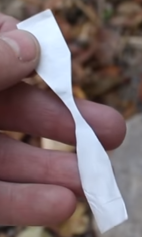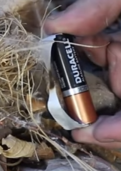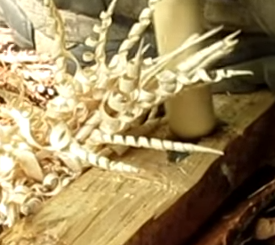Oh Sick Burn: Unconventional Fire Starting Methods
- May 13, 2019
- 3 min read
Over the years, I have read countless articles drone on about fire procurement through bow drill, flint and steel, ferrocenium rod, BIC lighters, etc. It is always a good idea to have at least two ignition sources in your bug out bag. However, what if you don't have these items? In this article, we will discuss a few "sure fire" ways to build a fire, using unconventional methods.
Your flashlight can be a very effective fire starter. If your candling device has a removable reflector, the metal cone shaped piece, it can be used to focus sunlight onto a tender source. If you are familiar with starting a fire with a magnifying glass, it works in the same way.
Do you carry bubble gum with you? If you do, you have a simple fire starting device in your pocket. Take a battery out of your headlamp or other device. Trim the thin, foil gum wrapper into a bow-tie shape. Then, simply touch the metallic ends of the foil to each post of the battery. Alternatively, you can use a piece of steel wool.
Batteries dead? Not to fear. Many devices contain rechargeable lithium ion batteries. To use this method, gather a large pile of tender and pencil-sized diameter wood. Remove the lithium ion battery from the device and put it on the ground. Wearing gloves and leaving the battery on the ground, use a sharp object to puncture the battery. GET BACK IMMEDIATELY. The next few minutes will resemble something straight out of Dante's Peak. Lithium batteries can burn up to 1,000 degrees Fahrenheit and release toxic fumes. Also, they could possibly explode. Throw your entire pile of wood on top of the battery and get back again. After a few minutes the battery should burn out and your pile of sticks will be on fire.
What if I told you a water heater contains a great fire starting device? Most water heaters contain a removable, sacrificial rod to protect them against rust and corrosion. Manufacturers make several styles of anode rods made of different materials. We are interested in ones made of magnesium. They can be purchase at most home supply stores for around $20. Simply use the spine of your knife to shave some of the material off into a bird's nest. Magnesium is easily ignited with a BIC lighter or ferrocenium rod. This metal produces temperatures around 4,000 degrees Fahrenheit and will burn even when wet, making it ideal for survival situations.
How many times have you attempted a bow drill fire, but moisture hampered a sustainable ember? Let's be honest, you aren't always going to be in ideal conditions, or you might be performing 100% in a true life survival situation. This next technique will substantially increase your chances of getting a bow drill fire started. Whether you're hunting, or carrying a bug out bag, many people carry ammunition with them. Carefully, break open the bullet casing using something that won't cause sparks. I find 22 cartridges are the easiest to open. Create your bow drill set, as you normally would, but instead of cutting a notch, only create a small groove to the side of your divot. Make sure the groove is on the side away from your foot. Fill the groove with a small amount of gun powder. Cover the groove with your tender bundle and begin the bow drill process as normal. Be prepared, when the gun powder reaches critical temperature, it will burst into flames, igniting the tender above it.
The final method is creating fire from household items. Potassium nitrate, also known as saltpeter, is the active ingredient in most commercial stump removal products. To make a substance similar to gunpowder, mix a 50/50 ratio of potassium nitrate and sugar. Using a ceramic mortar and pestle, you will start off by processing the stump remover into a fine powder. Then add an even amount of sugar and mix thoroughly. This powder can be sprinkled directly on a tinder bundle to quickly ignite damp material. You can also make a paste out of it and apply it to cotton. Once dried, you have a sure fire material similar to rub cloth.

These unconventional fire starting methods could save your life in a survival or collapse situation. However, for everyday fires, I would recommend using more conventional means and fine tuning your skills. If you decide to try these methods, please take safety precautions and check local laws and regulations. As always:
Journey Past Your Limits























































Comentários